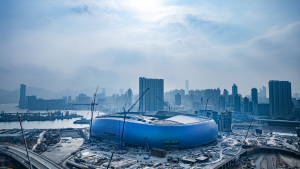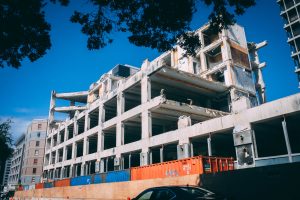Building Information Modeling (BIM) has reduced the project duration as well as slashed the construction cost by 33 percent, while increasing the labor productivity by 43 percent.
Under the INR 24,948.65 crore (USD 3.3 billion) Delhi Metro Phase IV project, the Delhi Metro Rail Corporation (DMRC) has proposed a 103.93 km corridor, expected to be complete by 2024. In 2019, 61,679 kilometres across three lines (priority corridors) with 45 stations were given a green light. The following year, the length of the silver line (one of the priority lines) was increased, expanding the project length by 65.1 kilometres.
Providing last-mile connectivity to residents, the corridors proposed under the project include Rithala – Narela (21.73 km); Inderlok – Indraprastha (12.57 km); Tughlakabad – Terminal 1 (22.20 km); Lajpat Nagar – Saket G-Block (7.96 km); Janakpuri (west) – RK Ashram (28.92 km) and Mukundpur – Maujpur (12.54 km).
Techture, an Architecture, Engineering, and Construction (AEC) consultancy, is working with DMRC on the project. The company uses Autodesk BIM Collaborate Pro to ensure that deadlines are met and the contractor, China Civil Engineering Construction Corporation – KEC International JV, gets to know the nuances of structural features and behavioral features encompassing operations.
Building Information Modeling (BIM) has reduced the project duration as well as slashed the construction cost by 33 percent, while increasing the labor productivity by 43 percent. It has also cut greenhouse gas emissions in the built environment by 50 percent, leaving very little room for errors like construction risks in the design phase by taking into account categories, including design, safety, finance, and schedule.
“Autodesk cloud solutions helped us to optimize model design and encouraged collaboration. The digitization of design-to-execution workflows helped the multi-disciplinary project stakeholders to collaborate remotely during the advent of the pandemic,” said Dayesh Jaiswal, Director, Techture.
Value Proposition and Connectivity
The services BIM promises to deliver include:
- Design and Construction modelling,
- Sustainable Design and Construction,
- Efficient Stakeholder Collaboration: For remote, off-site, or to streamline the process,
- Accurate Quantity Estimation: For Reduced project costs,
- Efficient digitization with parametric design, and
- 4D/5D Simulation: For planned vs actual assessments.
Challenges in the way
The challenges that the project could encounter are:
- Project area and length Expansion
- Detailed Parametric Modeling of viaducts: A viaduct is a specific type of bridge that consists of a series of arches, piers or columns supporting a long elevated railway or road.
- Meeting Project Timelines: for creating complex structural geometries, and advanced rebar modeling,
- Lack of collaboration: Active collaboration between stakeholders is crucial.
- Development of complex structures such as U-girders, T-girders and pier caps.
Solution for a smooth ride
To make things easier and fast-track phase IV, DMRC with the help of Autodesk BIM Collaborate Pro has set up an online collaboration platform, making available a common data environment (CDE). This enables designers to visualize the complex geometry and shift from traditional on-site logistics processes to data-and-model-based logistics process thus increasing their efficiency and productivity.
The design also addressed the environmental concerns by cutting greenhouse gas emissions and checked wastage, with the contractor optimizing the length of rebars. Besides, BIM-based construction supply chain framework eased the audit process.
Reducing GHG emission
Construction activities have been the largest contributors to waste generation across several countries and continents. Use of BIM for sustainable design eases the choice of green materials for construction. BIM minimizes waste by preparing parts with hybrid manufacturing which makes it easy to identify the need of replacement and the resultant waste can be characterized to address it in the proper recycling stream.
BIM also creates energy efficient design models for infrastructure projects to develop net-zero energy buildings. It enables digital twin systems to track energy consumption and conduct predictive maintenance and operations.










